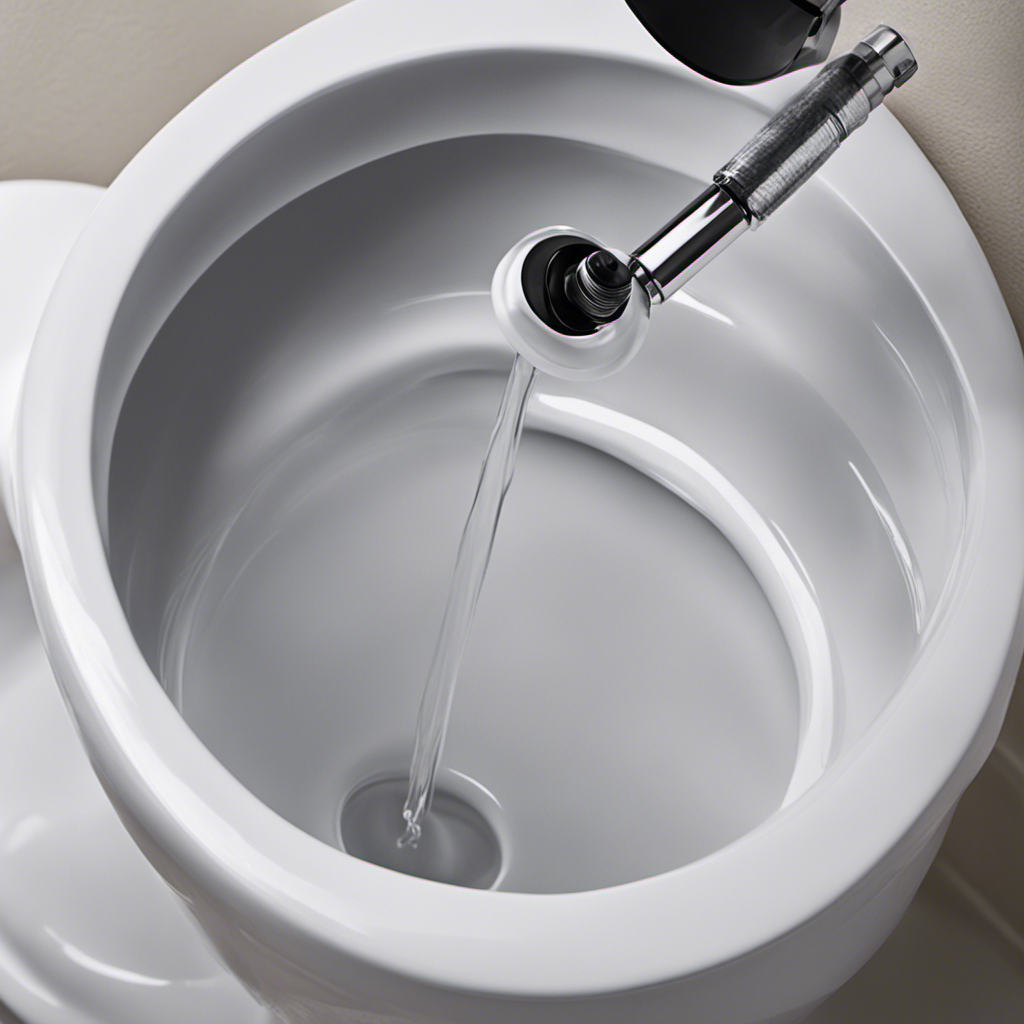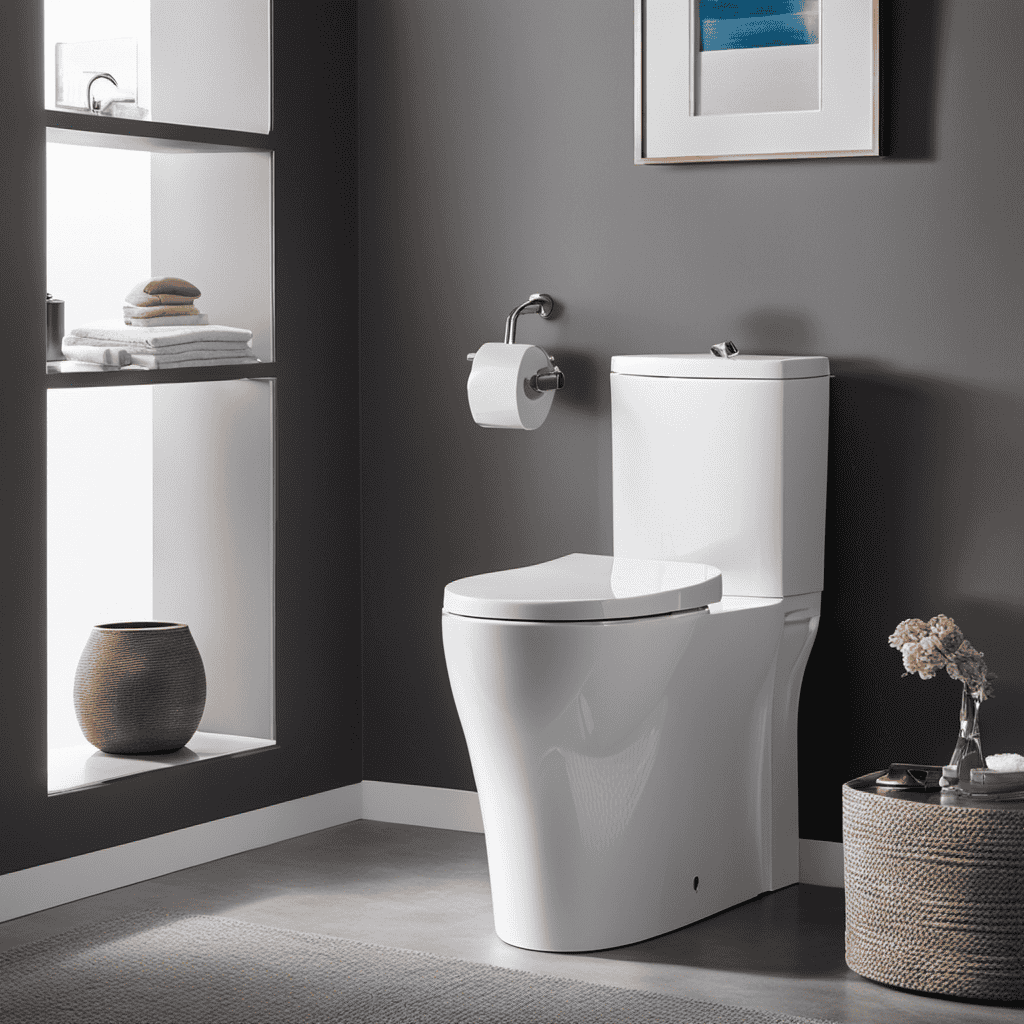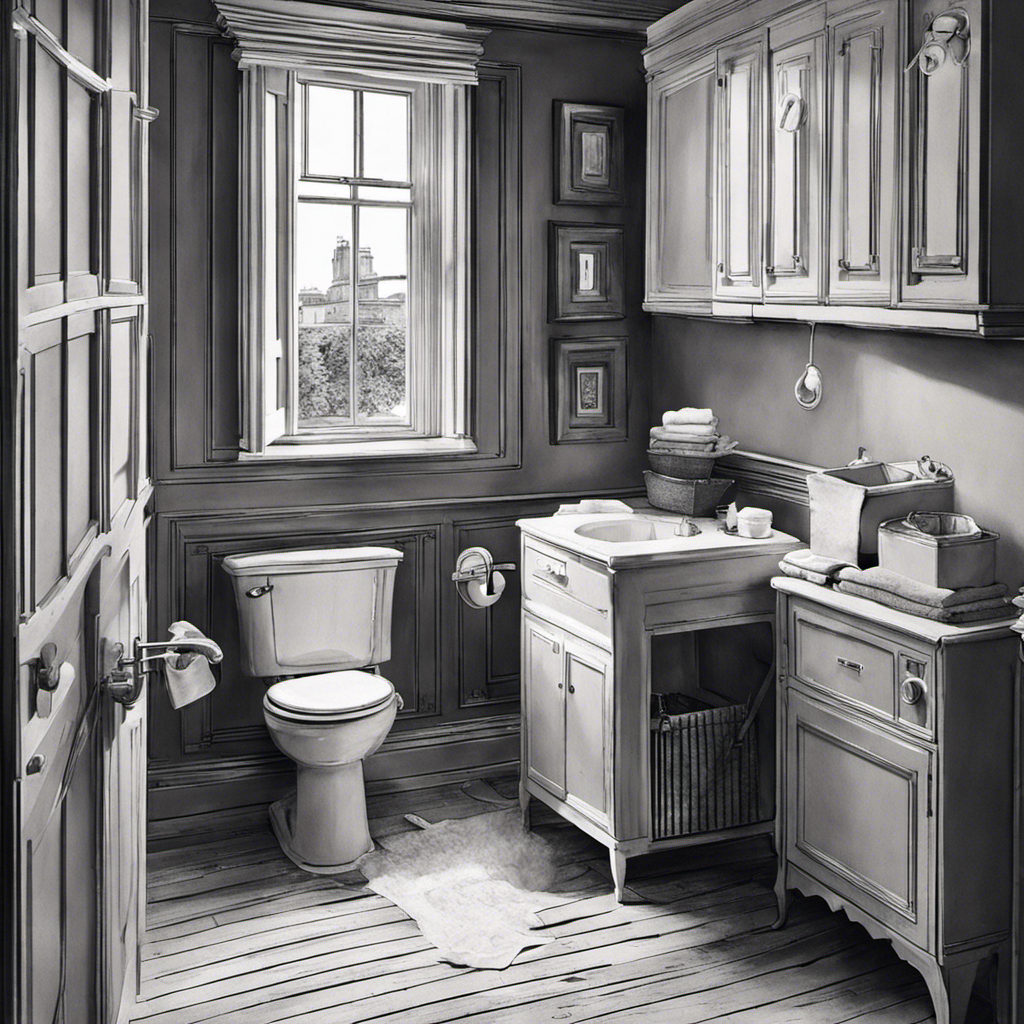When nature calls, the last thing anyone wants to encounter is a toilet tank that refuses to fill. This common plumbing predicament can leave one feeling high and dry.
Fortunately, there are several common causes and fixes for this frustrating issue. From water pressure problems to broken fill valves, this article will delve into the depths of toilet tank troubles and provide practical solutions to ensure a smooth and efficient flush.
So, fear not, dear reader, relief is just a few fixes away.
Key Takeaways
- Water pressure issues, broken toilet fill valve, problems within the sewer line, and a damaged toilet bowl can all cause a toilet tank to not fill properly.
- Adjusting the float ball and float arm can help regulate the water level in the tank.
- The fill valve may need to be adjusted using a screwdriver to control the amount of water refilling the tank.
- The trip assembly and toilet flapper are common components that may need to be replaced if they are faulty or worn out.
Water Pressure Issues
Water pressure issues can prevent a toilet tank from filling properly, causing the need for adjustment or repair. Troubleshooting low water pressure is the first step in resolving this problem.
Start by checking the water supply line for any clogs or blockages. If there is a clog, it can be fixed by following these steps:
- First, shut off the water supply to the toilet.
- Then, disconnect the supply line from the toilet tank. Use a bucket or towel to catch any water that may spill out.
- Next, inspect the supply line for any debris or buildup.
- If there is a clog, use a plunger or a plumbing snake to clear it.
- Reattach the supply line to the toilet tank and turn the water supply back on.
This should fix the low water pressure issue and allow the toilet tank to fill properly.
Broken Toilet Fill Valve
The broken fill valve in the toilet prevents the tank from refilling properly. Troubleshooting the toilet fill valve is essential for resolving this issue. Here are some steps to take:
- Inspect the fill valve for any signs of damage or wear.
- Turn off the water supply to the toilet and flush to empty the tank.
- Disconnect the water supply line from the fill valve.
- Remove the old fill valve by unscrewing it from the bottom of the tank.
Toilet fill valve replacement is necessary to restore proper functioning. When selecting a new fill valve, ensure compatibility with your toilet model. Follow the manufacturer’s instructions for installation.
Once the new fill valve is in place, reconnect the water supply line and turn on the water. Test the toilet by flushing and observe if the tank refills properly. If the issue persists, further troubleshooting or professional help may be required.
Problems Within the Sewer Line
Problems within the sewer line can contribute to the malfunction of the toilet tank’s filling mechanism. One of the signs of a blocked sewer vent line is when multiple drains in the house are slow or clogged. This can include sinks, showers, and other fixtures.
Another sign is a foul odor coming from the drains or toilets. If these signs are present, it may be necessary to clear the blocked sewer vent line. This can be done by using a plumber’s snake or sewer jetting equipment to remove any obstructions.
It is important to address a blocked sewer vent line promptly, as it can lead to further plumbing problems. If the issue persists or is beyond your capabilities, it is recommended to seek professional help.
Damaged Toilet Bowl
If a damaged toilet bowl is causing the toilet tank to not fill properly, the homeowner should consider replacing it to resolve the issue.
Cracks in the toilet bowl can lead to leaks, which can prevent the tank from filling up with water. This can result in a weak flush or no flush at all.
Replacing the toilet bowl is the best solution to ensure proper functioning of the toilet.
A leaking toilet bowl not only wastes water but can also cause damage to the surrounding flooring and walls if left unattended.
It is important to address toilet bowl cracks and leaks promptly to prevent further damage and potential plumbing problems.
Potential Plumbing Problems if Not Addressed Promptly
Ignoring or delaying the resolution of toilet tank issues can lead to potential plumbing problems. One such problem that can arise is a blocked sewer vent line.
Signs of a blocked sewer vent line include gurgling sounds coming from the toilet, slow drainage, unpleasant odors, and water backup in sinks or showers.
Clearing a blocked sewer vent line is a task best left to professional plumbers. They have the necessary tools and expertise to diagnose and resolve the issue effectively. The process usually involves using specialized equipment such as drain snakes or hydro jetting to remove the blockage and restore proper ventilation in the sewer system.
It is important to address this problem promptly to prevent further damage and ensure the smooth functioning of the plumbing system.
Adjusting the Float Ball
To ensure the tank fills properly, you can adjust the float arm manually or manipulate the screw attachment. The float ball is responsible for regulating the water level inside the toilet tank. If the float arm drops or becomes worn out, it can cause the tank to not fill properly.
To adjust the float arm, flush the toilet and observe the water level. If it is too low, adjust the float arm upwards by bending it slightly. If it is too high, gently bend the float arm downwards. Alternatively, you can manipulate the screw attachment on the float arm to achieve the desired water level.
Keep adjusting and testing until the tank fills to the right level. This simple adjustment can help resolve issues with a toilet tank not filling properly.
Adjusting the Fill Valve
The fill valve, responsible for refilling the tank after flushing, can be adjusted using a screwdriver. If the toilet tank is not filling properly, it may be necessary to adjust the fill valve.
To do this, locate the fill valve, usually located on the left side of the tank. Use a screwdriver to turn the adjustment screw clockwise to increase the water level or counter-clockwise to decrease it. Flush the toilet and observe if the tank fills to the desired level. If not, continue adjusting until the desired water level is achieved.
If adjusting the fill valve does not solve the issue, other potential causes such as a blocked sewer vent line or a faulty trip assembly may need to be addressed. Signs of a blocked sewer vent line include gurgling sounds in the drains and slow drainage in multiple fixtures.
Replacing the trip assembly involves replacing the L-shaped metal or plastic lever connected to the toilet handle. This can be done by purchasing a new lever or entire repair kit, and it is an easy and inexpensive fix.
Frequently Asked Questions
How Can I Tell if I Have a Blocked Sewer Vent Line?
To determine if there is a blocked sewer vent line, a homeowner can look for signs such as slow drains, gurgling sounds, or foul odors. Troubleshooting plumbing issues promptly is important to prevent further damage.
What Are Some Simple Fixes I Can Try if My Toilet Tank Is Not Filling Properly?
If a toilet tank is not filling properly, there could be a water supply issue or a leak. Simple fixes include adjusting the float ball or fill valve, replacing the trip assembly, or installing a new flapper.
When Should I Consider Seeking Professional Help for a Toilet Tank Not Filling Issue?
When troubleshooting a toilet tank not filling issue, if adjusting the float ball, fill valve, trip assembly, or flapper doesn’t resolve the problem, it may be time to consider seeking professional help for further diagnosis and repair.
What Are the Signs That My Toilet Bowl Is Damaged?
A damaged toilet bowl may show signs like cracks, leaks, or visible wear and tear. To repair it, one can purchase a repair kit or seek professional help for a more extensive fix.
How Do I Know if I Have Potential Plumbing Problems if My Toilet Tank Is Not Filling?
If a toilet tank is not filling, it could indicate potential plumbing problems. This could be due to issues with water pressure or a faulty fill valve. It is important to address these issues promptly to prevent further damage.
Conclusion
In conclusion, when faced with a toilet tank not filling, it’s essential to address the issue promptly to avoid potential plumbing problems.
By adjusting the float ball and fill valve, you can regulate the water flow and ensure proper functioning of the toilet.
Replacing the trip assembly or the toilet flapper may also be necessary to fix the problem.
It’s important to be aware of signs of a blocked sewer vent line and seek professional help if needed.
Remember, a well-functioning toilet is crucial for a smoothly running household.










